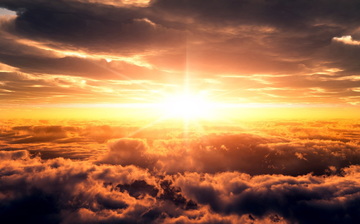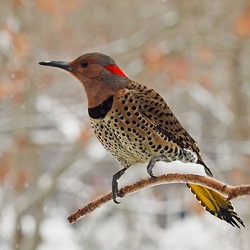Abiotic Characteristics
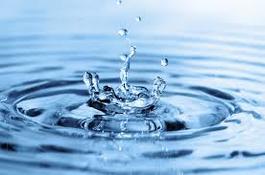
- Water: Water is a very important factor in the forest. Water provides liquid for all of the animals and all of the trees and plants.
- Sunlight: Sunlight gives new life to the forest plants and animals in the early spring. In the spring the sun melts the snow and provides lots of water for all the forest.
- Soil: Depending on the area, the soil can either be very dry or very moist. Without the soil in the forest the trees would not have any nutrients. The soil plays an important role by sucking in water so that the roots can take it in.
- Air: Air is a very important factor in the Montane. The trees and plants and mammals all depend on air to live. Without air there would not be any animals or plants.
- Temperature: As the temperature increases it gets hotter and it is hard for the plants and animals to adapt to the rapid changing climate.
- Wind: When wind blows in the montane it blows seeds around which spreads the seeds and causes new trees to sprout.
Although the wind is good it can also cause many problems in the ecosystem. Harsh winds can destroy animal homes and possibly kill the animals.
These are some of the Abiotic Characteristics in the Montane Mixed Conifer Ecosystem
Major Producers
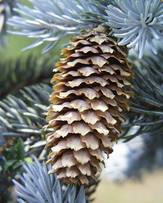
Some of the major producers in the montane are...
- The Blue Spruce Tree
- Douglas Fir
- The Chokecherry
- Other Major Producers
Major Consumers
- Herbivores
The Elk eats mostly grass, shrubs, and tree leaves. It usually lives in woodland habitats. Some of the elk's adaptations that help them survive are they have special stomachs to help them digest food. Their teeth are also helpful they help rip off leaves and stems.
- Carnivores
- Omnivores
The Squirrels usually eat nuts, fruits, and seeds but it also eats insects .The squirrels lives in a lot of places and usually they hide in holes and under things.The Squirrels adaptations are its strong legs, its sense of smell, and its memory.
Birds
|
flicker woodpecker
|
|
Human Impacts
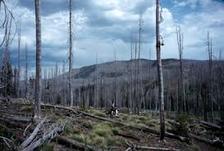
The human culture wants to expand into parts of the montane, knocking out all parts of the ecosystem. Some kill animals and plants in the process. We also can start wildfires creating mass death in plants and wildlife.
A huge problem in the montane is humans expanding into the forest, building houses and clearing trees for ski resorts.
A huge problem in the montane is humans expanding into the forest, building houses and clearing trees for ski resorts.
Work Cited
http://www.nps.gov/articles/montane-human-impacts.htm
http://plants.usda.gov/plantguide/pdf/pg_arme6.pdf
http://plants.usda.gov/factsheet/pdf/fs_sara2.pdf
http://www.nps.gov/articles/montane-human-impacts.htm
http://www.mountain-forecast.com/
http://www.realchristmastrees.org/dnn/Education/TreeVarieties/ColoradoBlueSpruce.aspx
https://www.nwf.org/Wildlife/Wildlife-Library/Plants/Douglas-Fir.aspx
https://sites.google.com/site/themontanecordillerabc/home/soil-vegetation
https://mountainplover.files.wordpress.com/2013/02/prunus-virginiana-chokecherry-xg-2008july18-lah-4505.jpg
https://www.google.com/search?q=human%20impacts%20in%20the%20montane&rlz=1CAACAG_enUS669US669&espv=2&biw=1366&bih=614&source=lnms&tbm=isch&sa=X&ved=0ahUKEwjC0_af2dTJAhVQnYMKHSdGDmEQ_AUIBigB&safe=active&ssui=on#imgrc=vc5YvjqR_wYh5M%3A
https://www.google.com/search?q=woodpecker&rlz=1CAACAG_enUS669US669&espv=2&biw=1366&bih=614&source=lnms&tbm=isch&sa=X&ved=0ahUKEwiZqK7_2NTJAhWxnoMKHf8BCvwQ_AUIBigB&safe=active&ssui=on#imgrc=pt6Dy8Y7YO6CwM%3A
https://www.google.com/search?q=sunlight&rlz=1CAACAG_enUS669US669&espv=2&biw=1366&bih=614&source=lnms&tbm=isch&sa=X&ved=0ahUKEwiv4e3G2NTJAhVyjoMKHX98BfoQ_AUIBigB&safe=active&ssui=on#imgrc=-ulcbB-rMhSKOM%3A
https://www.google.com/search?q=water&espv=2&rlz=1CAACAG_enUS669US669&biw=1366&bih=614&source=lnms&tbm=isch&sa=X&ved=0ahUKEwi188qU2NTJAhWJj4MKHfEBByMQ_AUIBigB&safe=active&ssui=on#imgrc=l2jE_8lH_A1n3M%3A
http://plants.usda.gov/factsheet/pdf/fs_sara2.pdf
https://mmeara.files.wordpress.com/2012/09/pic-flamb-male-aur1.jpg
http://plants.usda.gov/plantguide/pdf/pg_arme6.pdf
http://plants.usda.gov/factsheet/pdf/fs_sara2.pdf
http://www.nps.gov/articles/montane-human-impacts.htm
http://www.mountain-forecast.com/
http://www.realchristmastrees.org/dnn/Education/TreeVarieties/ColoradoBlueSpruce.aspx
https://www.nwf.org/Wildlife/Wildlife-Library/Plants/Douglas-Fir.aspx
https://sites.google.com/site/themontanecordillerabc/home/soil-vegetation
https://mountainplover.files.wordpress.com/2013/02/prunus-virginiana-chokecherry-xg-2008july18-lah-4505.jpg
https://www.google.com/search?q=human%20impacts%20in%20the%20montane&rlz=1CAACAG_enUS669US669&espv=2&biw=1366&bih=614&source=lnms&tbm=isch&sa=X&ved=0ahUKEwjC0_af2dTJAhVQnYMKHSdGDmEQ_AUIBigB&safe=active&ssui=on#imgrc=vc5YvjqR_wYh5M%3A
https://www.google.com/search?q=woodpecker&rlz=1CAACAG_enUS669US669&espv=2&biw=1366&bih=614&source=lnms&tbm=isch&sa=X&ved=0ahUKEwiZqK7_2NTJAhWxnoMKHf8BCvwQ_AUIBigB&safe=active&ssui=on#imgrc=pt6Dy8Y7YO6CwM%3A
https://www.google.com/search?q=sunlight&rlz=1CAACAG_enUS669US669&espv=2&biw=1366&bih=614&source=lnms&tbm=isch&sa=X&ved=0ahUKEwiv4e3G2NTJAhVyjoMKHX98BfoQ_AUIBigB&safe=active&ssui=on#imgrc=-ulcbB-rMhSKOM%3A
https://www.google.com/search?q=water&espv=2&rlz=1CAACAG_enUS669US669&biw=1366&bih=614&source=lnms&tbm=isch&sa=X&ved=0ahUKEwi188qU2NTJAhWJj4MKHfEBByMQ_AUIBigB&safe=active&ssui=on#imgrc=l2jE_8lH_A1n3M%3A
http://plants.usda.gov/factsheet/pdf/fs_sara2.pdf
https://mmeara.files.wordpress.com/2012/09/pic-flamb-male-aur1.jpg
